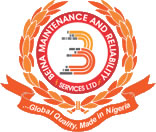No amount of maintenance can improve the reliability of an asset beyond its Inherent reliability or designed-in reliability. However, Operational Reliability of an asset can be improved by a good maintenance practice. This is not to support the argument that inherent reliability of an asset cannot be sustained, because the ultimate goal of any maintenance activity, is to do so. Maintenance managers struggle to sustain operational reliability instead of inherent reliability.
Over the years, there has always been a struggle to equate operational reliability with Inherent reliability. In most cases, maintenance managers get weary of this struggle and at some point are forced to de-rate assets to suit their inadequacies, thus affecting productivity and asset utilisation. Maintenance and operations personnel will always put the blame on operator skill level, maintenance strategy, quality of processing materials, operational conditions, maintenance quality, Quality of spares etc. All of the above mentioned are factors that have direct impact on the overall reliability of an asset. But I am quite sure, that some maintenance and reliability professionals will agree with me that 60% of the time all the above mentioned might be on point. But we still struggle to sustain or achieve this Inherent Reliability. It is pertinent to note, just as Bill Keter will say “ Reliability is a function of how well assets are designed, manufactured, installed, operated and maintained.
R=f(DMIOM)
Every stage of DMIOM (Design, Manufacture, Install, Operate and Maintain) has a direct impact on the reliability of assets. Therefore, improving reliability will require that same priority be given to all phases of asset life-cycle. “Every point in the Design, Manufacture, Install, Operate, and Maintain (DMIOM) cycle must be robust and have well trained people following well written procedures using tools appropriate for the job” Bill Keeter.
Most maintenance managers focus asset reliability more on the design, operation and maintenance of an asset and pay less attention to installation and Commissioning. What do you think will happen to the reliability of an asset, if installation and commissioning goes wrong? How reliable do you think a rotating equipment will be if it is installed in such a way that its lubrication system is not effective enough, or installed in such a way that there is a misalignment in its mechanical coupling, or installed in such a way that it doesn’t allow ease for maintenance? Of course, failure rate will be on the increase and maintainability will be low thus adversely affecting the reliability of the asset.
Installation needs to be done with high precision and a lot of expertise as a slight misappropriation could have great effect on the reliability of an asset. Mistakes in installation can account for some percentage deviation between inherent and operational reliability. Assets should be installed and commissioned in such a way that it allows ease of maintenance. Precision Installation is also very important, especially for rotating equipment and other equipment where a little imbalance could have great effect on performance, causing vibrations, misalignments, poor oil circulation etc.
Inherent reliability is defined by the design of an asset. All other activities that follow thereafter, will have an impact on the reliability of that asset. Therefore, every activity after manufacture should be given the same priority throughout the lifetime of the asset, if inherent reliability must be sustained. This will to a large extent reduce the marginal deviation between inherent reliability and operational reliability. Provided the earlier mentioned factors are in check. Welcome to an era of full asset utilization and reliability sustenance.




